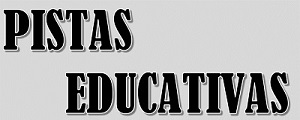NUEVA BASE DE DATOS DE DEFECTOS DE CAFÉ (RGB+NIR) PARA SEGMENTACIÓN SEMÁNTICA (NEW COFFEE DEFECTS DATABASE (RGB+NIR) FOR SEMANTIC SEGMENTATION)
Resumen
El café es uno de los productos agrícolas más importantes a nivel mundial, generando ingresos significativos para millones de pequeños agricultores. Sin embargo, la falta de información clara en la cadena productiva dificulta la valoración adecuada del producto. Para abordar este problema, el artículo presenta la creación de una nueva base de datos de imágenes de defectos en granos de café utilizando tecnologías de visión por computadora y segmentación semántica. Esta base contiene más de 200 imágenes en RGB e hiperespectral, cuidadosamente etiquetadas para incluir una variedad de defectos comunes, utilizando cámaras especializadas y algoritmos avanzados para capturar y procesar las imágenes. Los resultados demuestran que esta base de datos mejora significativamente la precisión en la identificación y clasificación de defectos, optimizando así la producción y la calidad del café, representando un avance tecnológico valioso para la agricultura y facilitando el desarrollo de soluciones innovadoras, promoviendo un comercio más justo.
Palabras Claves: Café, Imágenes, Segmentación, Semántica, Defectos.
Abstract
Coffee is one of the most important agricultural products worldwide, generating significant income for millions of small farmers. However, the lack of clear information in the production chain makes it difficult to properly evaluate the product. To address this problem, the article presents the creation of a new database of coffee bean defect images using computer vision and semantic segmentation technologies. This database contains more than 200 RGB and hyperspectral images, carefully labeled to include a variety of common defects, using specialized cameras and advanced algorithms to capture and process the images. The results demonstrate that this database significantly improves the precision in the identification and classification of defects, thus optimizing the production and quality of coffee, representing a valuable technological advance for agriculture and facilitating the development of innovative solutions, promoting more trade. fair.
Keywords: Coffee, Defects, Images, Segmentation, Semantics.
Texto completo:
787-801 PDFReferencias
Abade, A., Ferreira, P. A., & de Barros Vidal, F. (2021). Plant diseases recognition on images using convolutional neural networks: A systematic review. Computers and Electronics in Agriculture, 185, 106125.
Alfaro Barreto, M. M. (2022). Propuesta de mejora para incrementar la eficiencia del proceso de fabricación de hojuelas de cereales a través de herramientas de Lean Manufacturing en una empresa del sector alimenticio.
Biswas, S., Saha, I., & Deb, A. (2024). Plant disease identification using a novel time-effective CNN architecture. Multimedia Tools and Applications, 1-23.
Bouedron, E., Cochet, H., & Belchi, P. (2019). Effets et limites du commerce équitable fairtrade sur les producteurs de café arabica d’une région de piémont andin, au Pérou. Revue internationale des études du développement, 147–175.
Brahmanage, G., & Leung, H. (2019, October). Outdoor RGB-D mapping using intel-realsense. In 2019 IEEE SENSORS (pp. 1-4). IEEE.
Fu, J., Liu, J., Jiang, J., Li, Y., Bao, Y., & Lu, H. (2021). Scene segmentation with dual relation-aware attention network. IEEE Transactions on Neural Networks and Learning Systems, 32(6), 2547–2560.
Goodfellow, I., Bengio, Y., & Courville, A. (2016). Deep learning. MIT press.
Guzmán Farfán, Á. M., & Sosa Buñay, G. J. (2023). Desarrollo de un sistema de detección de la plaga Monilia bajo una plataforma IoT y Visión Artificial para las mazorcas de cacao (Bachelor's thesis).
Herrera, J. C., Medina, S., Beleño, K., & González, O. G. (2016). Diseño de un sistema automático de selección de frutos de café mediante técnicas de visión artificial. Revista UIS Ingenierías, 15(1), 7–14.
Lee, C. P., Lim, K. M., Song, Y. X., & Alqahtani, A. (2023). Plant-CNN-ViT: plant classification with ensemble of convolutional neural networks and vision transformer. Plants, 12(14), 2642.
Ortega Farez, E. I., & Rodriguez Marquez, Y. A. (2022). Estrategia de marca blanca en cadenas de supermercados internacionales para lograr la comercialización del café orgánico “El Negrito” al mercado de España en el 2022.
Puerta, G. I. (2015). Buenas prácticas para la prevención de los defectos de la calidad del café: Fermento reposado fenólico y mohoso. Centro Nacional de Investigaciones de Café (Cenicafé).
Ramos, P., Prieto, F. A., Montoya, E., & Oliveros, C. E. (2017). Automatic fruit count on coffee branches using computer vision. Computers and Electronics in Agriculture, 137, 9–22.
Rizk, F. H., Arkhstan, S., Zaki, A. M., Kandel, M. A., & Towfek, S. K. (2023). Integrated CNN and waterwheel plant algorithm for enhanced global traffic detection. Full Length Article, 6(2), 36-6.
Salas, J., de Barros Vidal, F., & Martínez-Trinidad, F. (2019). Deep learning: current state. IEEE Latin America Transactions, 17(12), 1925-1945.
Umar, M., Altaf, S., Ahmad, S., Mahmoud, H., Mohamed, A. S. N., & Ayub, R. (2024). Precision Agriculture Through Deep Learning: Tomato Plant Multiple Diseases Recognition with CNN and Improved YOLOv7. IEEE Access.
Williams, G. W. (2019). The Overlooked Agricultural Trade Promotion Program of the USDA Trade Aid Packages. Choices, 34(4), 1-8.
Yang, B., Li, M., Li, F., Wang, Y., Liang, Q., Zhao, R., ... & Wang, J. (2024). A novel plant type, leaf disease and severity identification framework using CNN and transformer with multi-label method. Scientific Reports, 14(1), 11664.
Zhang, X., Han, L., Dong, Y., Shi, Y., Huang, W., Han, L., ... & Sobeih, T. (2019). A deep learning-based approach for automated yellow rust disease detection from high-resolution hyperspectral UAV images. Remote Sensing, 11(13), 1554.
URL de la licencia: https://creativecommons.org/licenses/by/3.0/deed.es

 Pistas Educativas está bajo la Licencia Creative Commons Atribución 3.0 No portada.
Pistas Educativas está bajo la Licencia Creative Commons Atribución 3.0 No portada. 
TECNOLÓGICO NACIONAL DE MÉXICO / INSTITUTO TECNOLÓGICO DE CELAYA
Antonio García Cubas Pte #600 esq. Av. Tecnológico, Celaya, Gto. México
Tel. 461 61 17575 Ext 5450 y 5146
pistaseducativas@itcelaya.edu.mx
